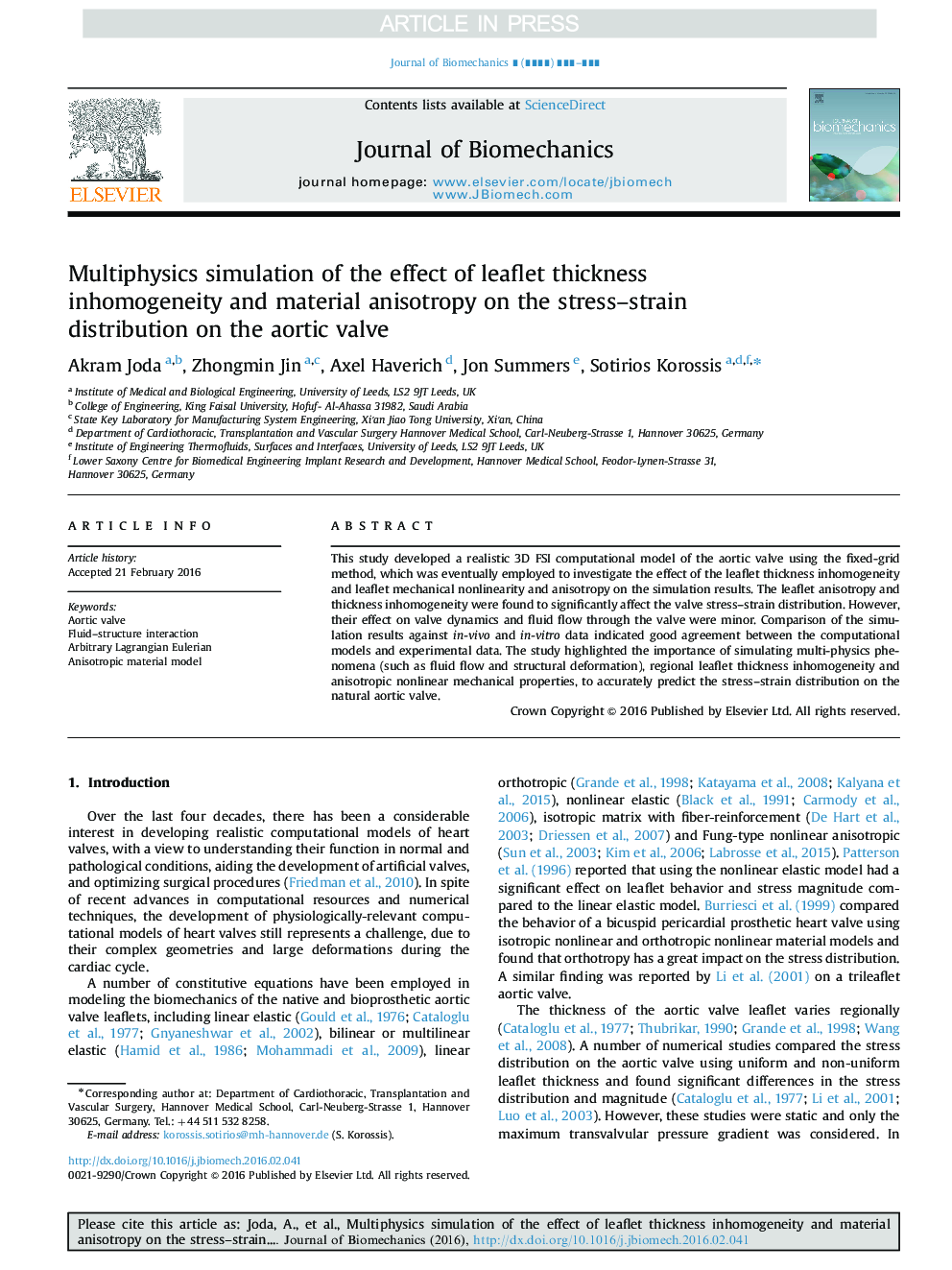| Article ID | Journal | Published Year | Pages | File Type |
|---|---|---|---|---|
| 5032414 | Journal of Biomechanics | 2016 | 11 Pages |
Abstract
This study developed a realistic 3D FSI computational model of the aortic valve using the fixed-grid method, which was eventually employed to investigate the effect of the leaflet thickness inhomogeneity and leaflet mechanical nonlinearity and anisotropy on the simulation results. The leaflet anisotropy and thickness inhomogeneity were found to significantly affect the valve stress-strain distribution. However, their effect on valve dynamics and fluid flow through the valve were minor. Comparison of the simulation results against in-vivo and in-vitro data indicated good agreement between the computational models and experimental data. The study highlighted the importance of simulating multi-physics phenomena (such as fluid flow and structural deformation), regional leaflet thickness inhomogeneity and anisotropic nonlinear mechanical properties, to accurately predict the stress-strain distribution on the natural aortic valve.
Related Topics
Physical Sciences and Engineering
Engineering
Biomedical Engineering
Authors
Akram Joda, Zhongmin Jin, Axel Haverich, Jon Summers, Sotirios Korossis,
